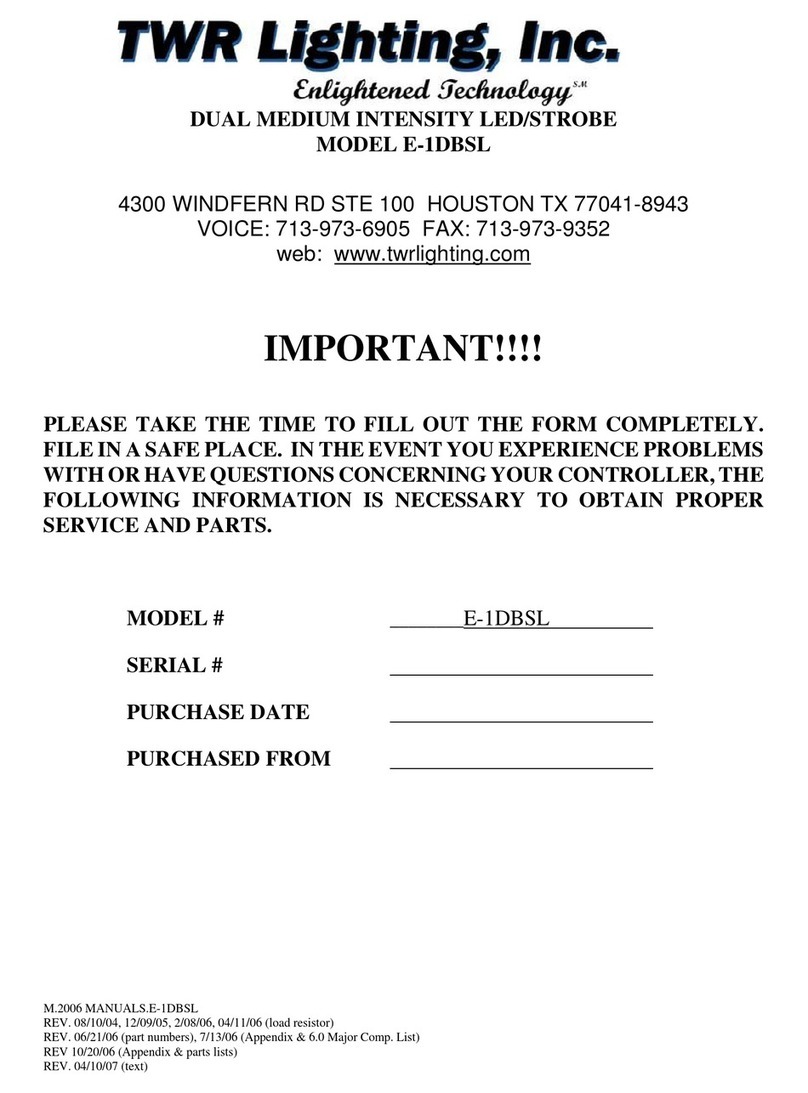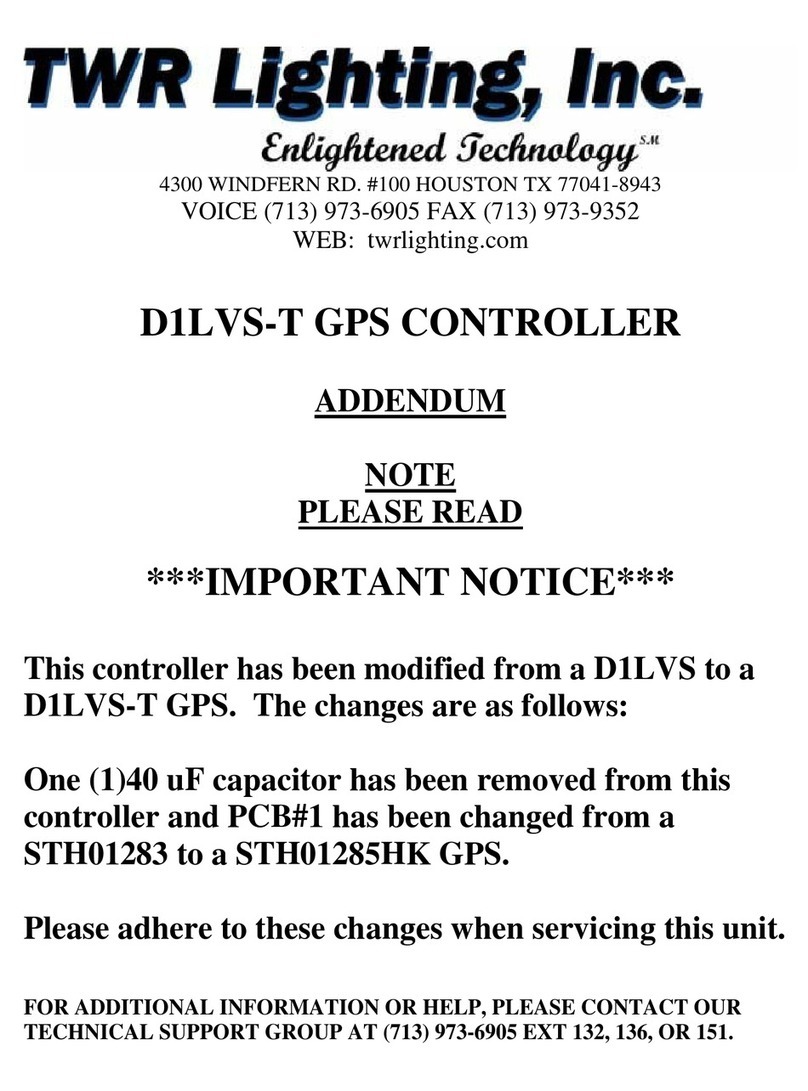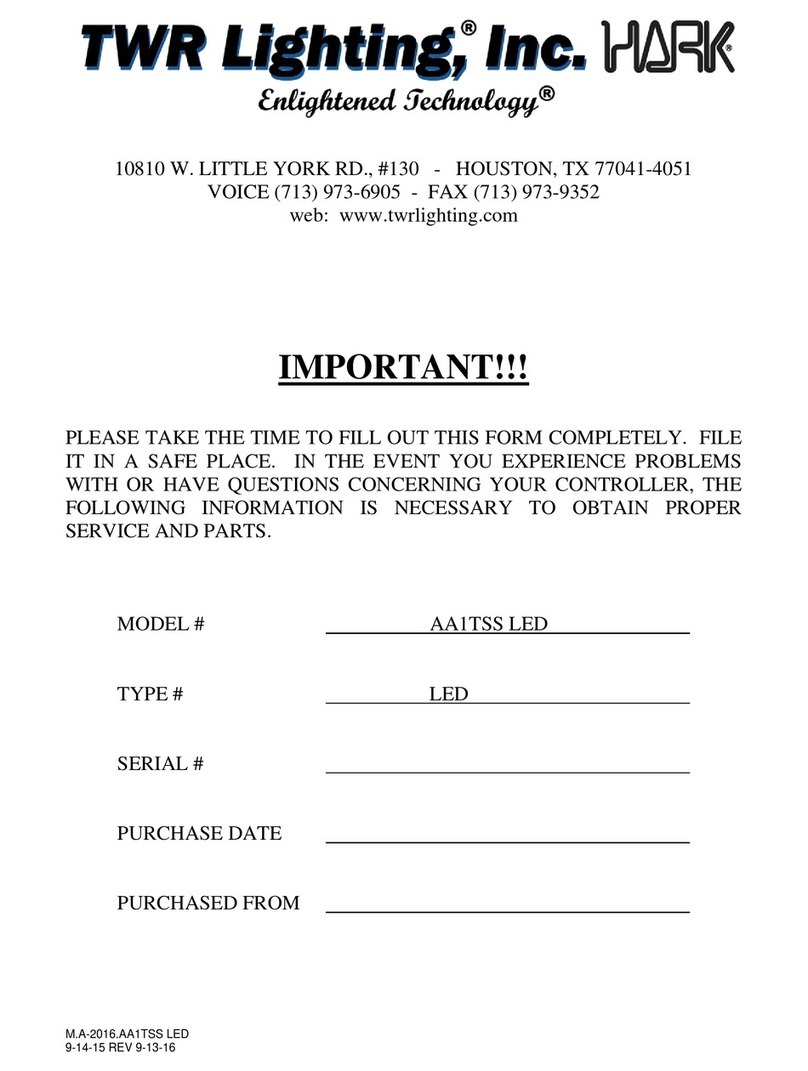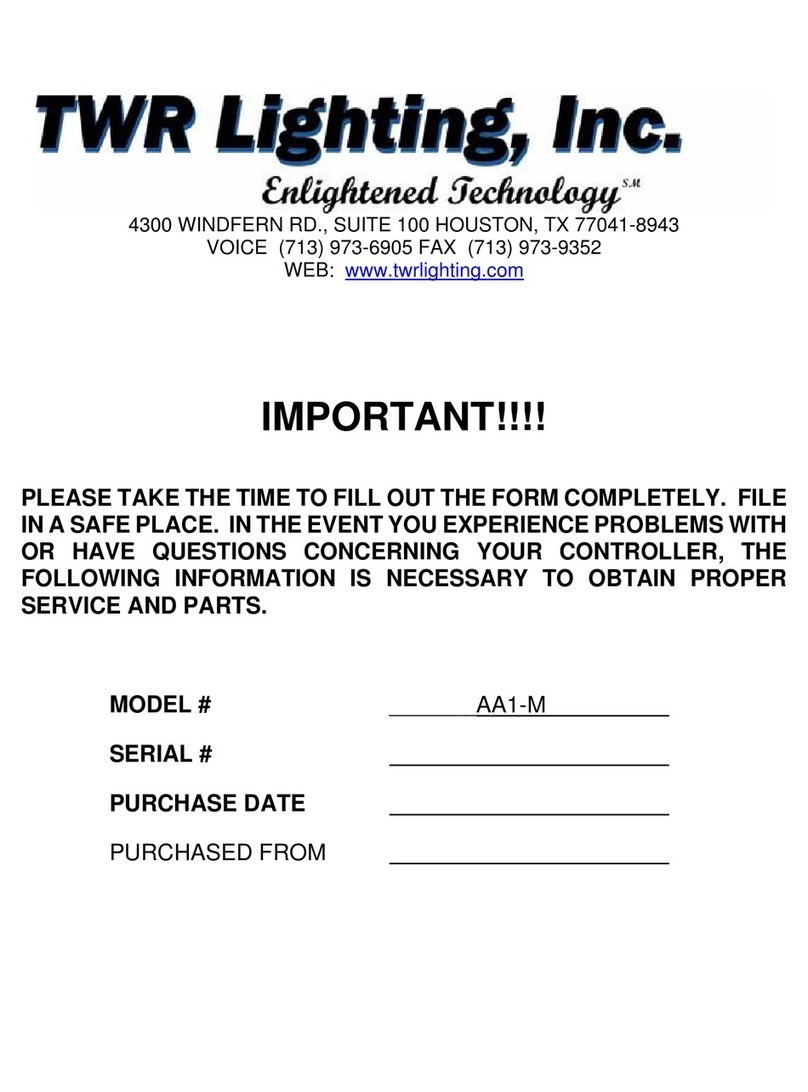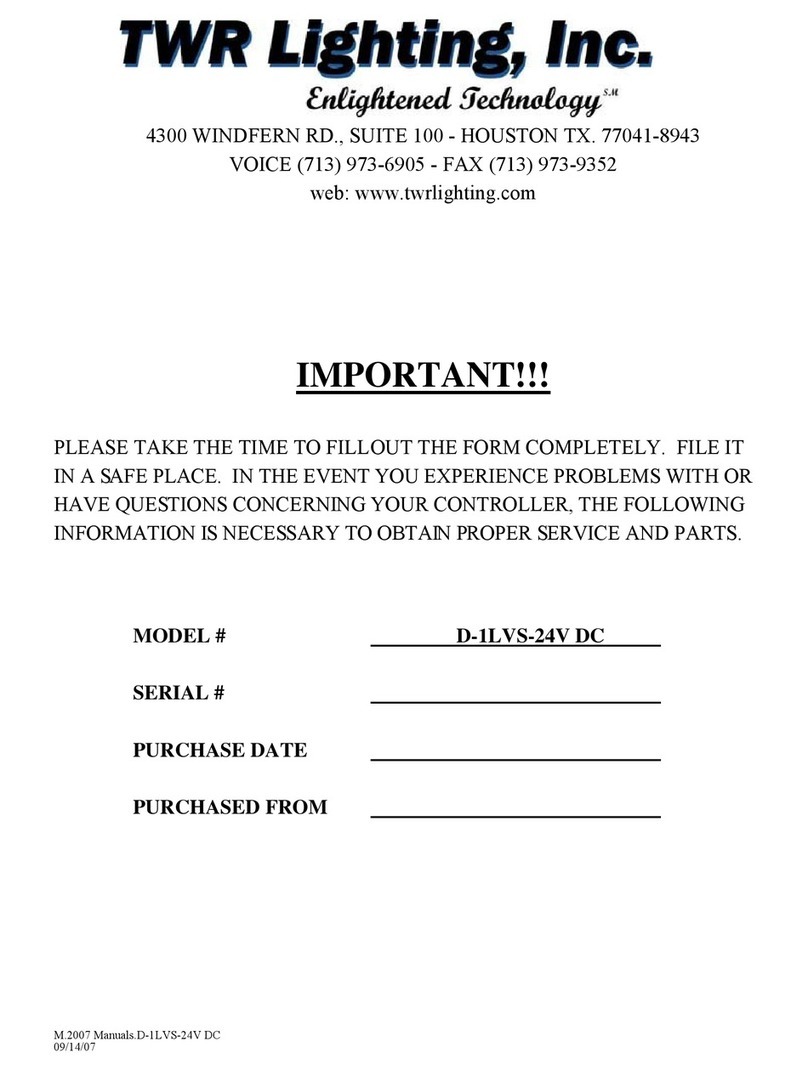
E-2/3DB CONTROLLER
E:\Documents and Settings\Administrator\Local Settings\Temporary Internet Files\OLK3\E2-3DB.doc
Rev. 01/13/00; Rev. 07/2000 o2L/H
Rev. 10/2000 (dwgs. 100239, 601, 601-01, 601-02, H02-258, 100031, 279L, 274S, 100089)
Rev. 06/21/00 (Reformatted Text; Revised Pg. 3 (2.4.1, 20 amp to 30 amp)
TABLE OF CONTENTS
1.0 INTRODUCTION ..................................................................................................1
1.1 APPLICATION ...........................................................................................1
1.2 SPECIFICATIONS OF EQUIPMENT.........................................................1
2.0 INSTALLATION....................................................................................................2
2.1 POWER SUPPLY CONTROL CABINET MOUNTING...............................2
2.2 PHOTOCELL HOUSING............................................................................2
2.3 PHOTOCELL WIRING...............................................................................2
2.4 POWER WIRING.......................................................................................3
2.5 TOWER LIGHTING KIT.............................................................................4
2.5.1 BEACON MOUNTING AND WIRING.............................................4
2.5.2 LIGHTING KIT WIRING.................................................................5
2.6 ALARM WIRING ........................................................................................8
2.6.1 WHITE STROBE #1 FAILURE (ST1).............................................8
2.6.2 WHITE STROBE #2 FAILURE (ST2).............................................8
2.6.3 WHITE STROBE #3 FAILURE (ST3).............................................8
2.6.4 RED STROBE FAILURE (RF)........................................................8
2.6.5 POWER FAILURE (PF).................................................................9
2.6.6 PHOTOCELL (PC).........................................................................9
2.6.7 SIDELIGHT #1 ALARM (SA1)........................................................9
2.6.8 SIDELIGHT #2 ALARM (SA2)........................................................9
2.7 ALARM TESTING ......................................................................................9
2.7.1 WHITE STROBE FAILURE (ST1, ST2, and ST3) .........................9
2.7.2 RED STROBE FAILURE (RF)......................................................10
2.7.3 POWER FAILURE (PF)...............................................................10
2.7.4 PHOTOCELL (PC).......................................................................10
2.7.5 SIDELIGHT #1 ALARM (SA1)......................................................10
2.7.6 SIDELIGHT #2 ALARM (SA2)......................................................10
2.8 CONTROLLER CONFIGURATION..........................................................10
3.0 THEORY OF OPERATION.................................................................................12
3.1 THE POWER SUPPLY...................................................................................12
3.2 THE FLASHTUBE....................................................................................12
3.3 TIMING CIRCUIT.....................................................................................13
3.4 TRIGGER CIRCUIT.................................................................................13
3.5 ALARM CIRCUITS...................................................................................14
3.5.1 WHITE STROBE FAILURE (ST1, ST2, and ST3) .......................14
3.5.2 RED STROBE FAILURE (RF)......................................................14
3.5.3 POWER FAILURE (PF)...............................................................14
3.5.4 PHOTOCELL (PC).......................................................................14
